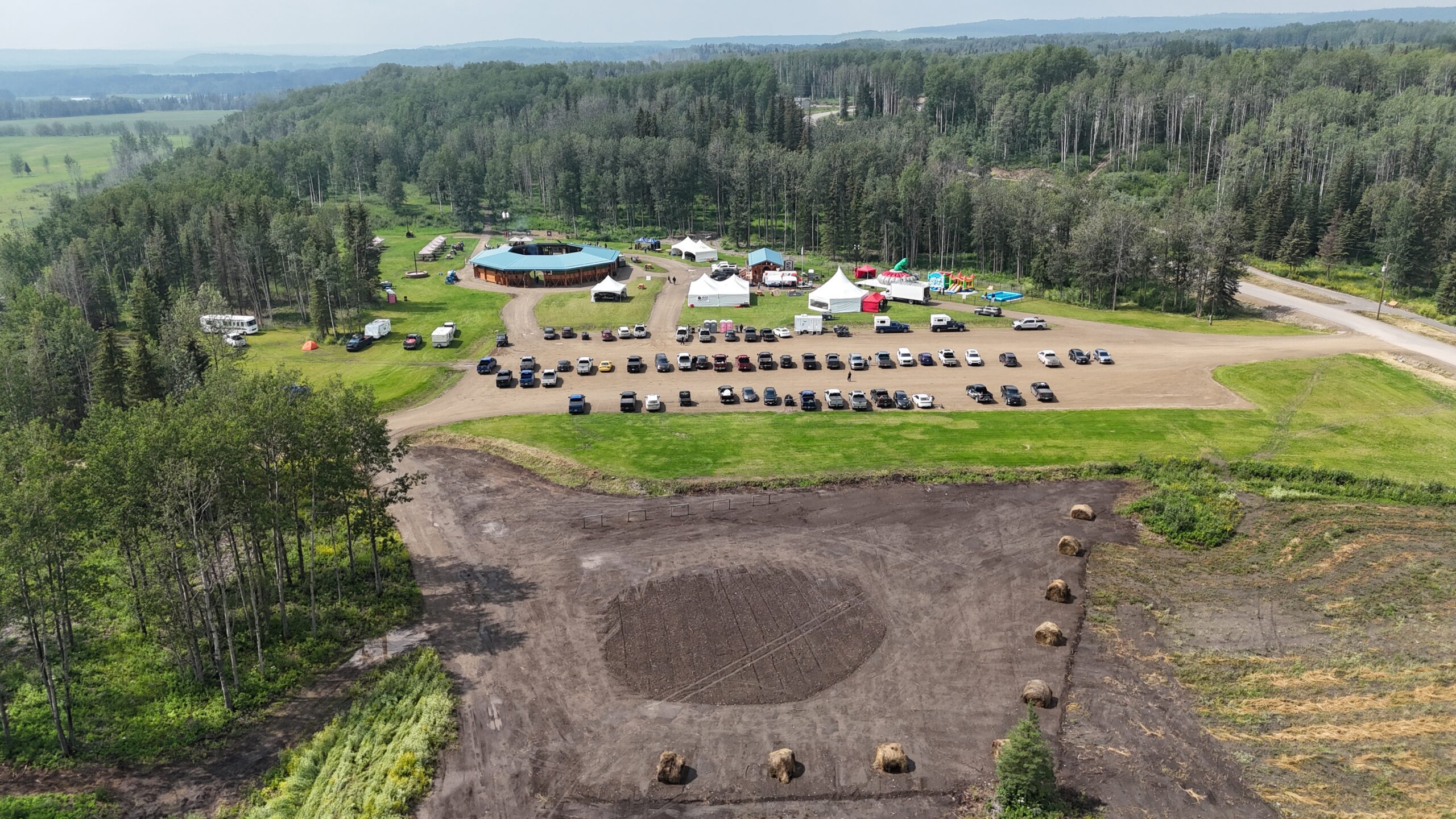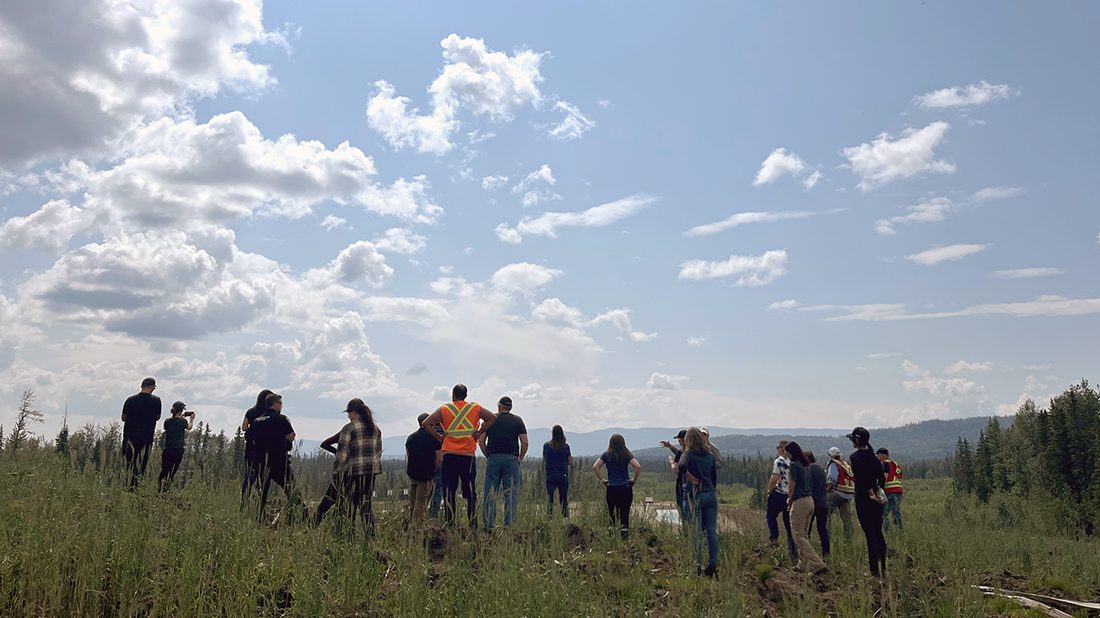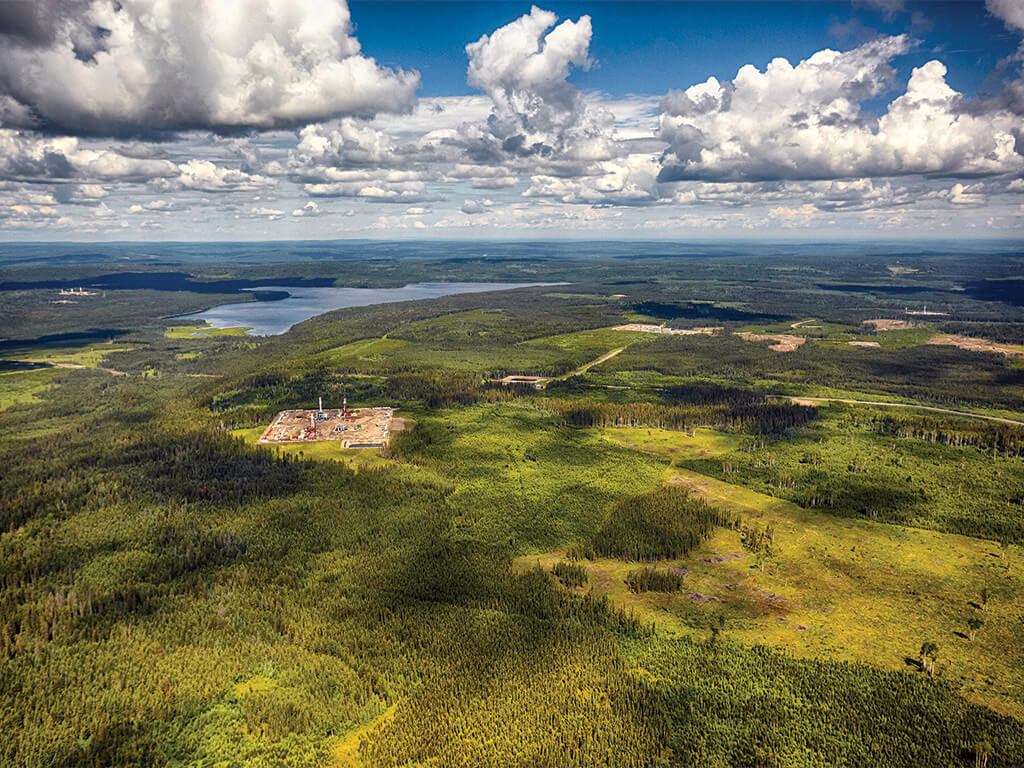Tsaa Dunne Za Energy will expand one of ARC Resources’ most profitable assets

That happened in July 2024, when the B.C. government awarded the Halfway River First Nation what’s known as oil and gas tenure in the heart of the Montney play.
It’s an agreement that grants the Nation decision-making authority over the exploration and development of petroleum and natural gas resources on more than 34,000 hectares of Crown land in its traditional territory, located approximately 1,000 kilometres northeast of downtown Vancouver.
That agreement is now moving further into action with a deal between Halfway River-owned Tsaa Dunne Za Energy (TDZE) and ARC Resources.
Members of the Halfway River First Nation participate in a field tour with the BC Energy Regulator in June 2025. Photo courtesy BCER
The agreement, signed earlier this year, will see TDZE work with Calgary-based ARC to develop about 25 per cent of the tenured land.
The region is adjacent to ARC’s existing Attachie natural gas operations, which are rich in high-value natural gas liquids.
The company describes Attachie as one of its most profitable assets, which can be expanded thanks to the TDZE agreement.
“This land was deferred from development for more than two decades while sitting in the premier natural gas play in North America,” says Kist, one of TDZE’s managing executives.
“Unlocking it will generate all kinds of economic activity and royalties for the B.C. government that help pay for schools and health care. But it will also generate the same benefits for the Halfway River First Nation.”
ARC plans to integrate the new areas using existing roads, pipelines and other infrastructure from Attachie.
Developing the land will still require consultation with the Halfway River First Nation.
Drilling in the Montney play straddles the border between northeast B.C. and northwest Alberta. Photo courtesy ARC Resources
“This is very much about Tsaa Dunne Za Energy delivering the best return on this particular asset for its shareholders, which are the members of the Halfway River First Nation,” Kist says.
In addition to granting tenure to develop oil and gas on the land, the B.C. government and Halfway River have implemented a landscape planning pilot to mitigate the impacts of development on the Nation’s Treaty 8 rights and manage potential cumulative effects of new development.
“The tenure award and landscape planning pilot will help to ensure that oil and gas development in these areas is sustainable and managed in accordance with the values of the Halfway River First Nation,” Chief Darlene Hunter said in a statement.
Kist sees the agreement as a template for other governments, energy companies and First Nations to follow.
“This has the potential to be the model for cooperative development so that we can develop resources in the right way that benefits governments, First Nations and industry. I’m proud to be a part of this because everybody involved wins from this.”
This article was originally produced by the Canadian Energy Centre. See the original article here.

